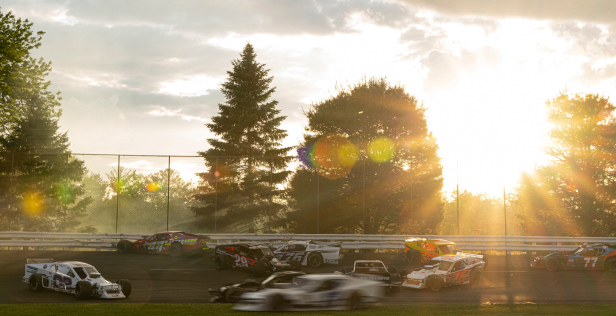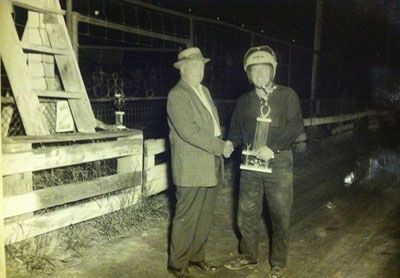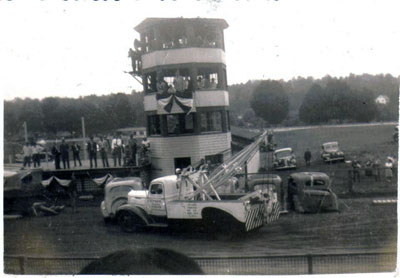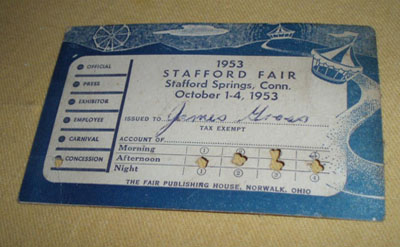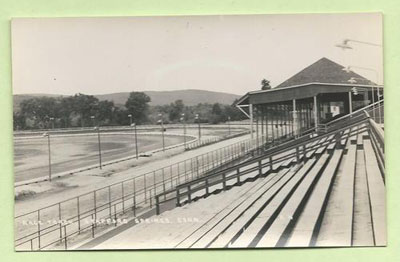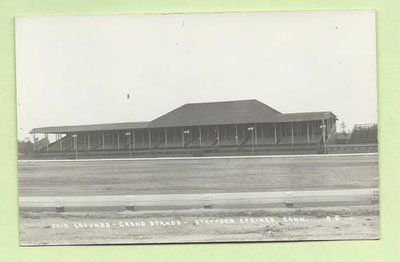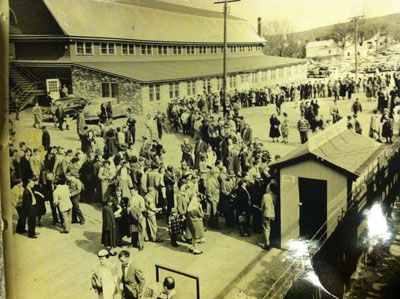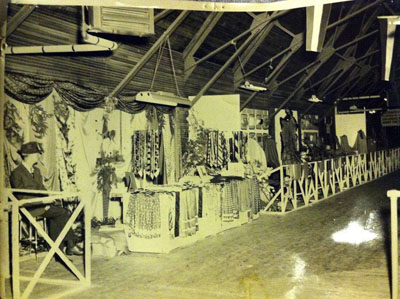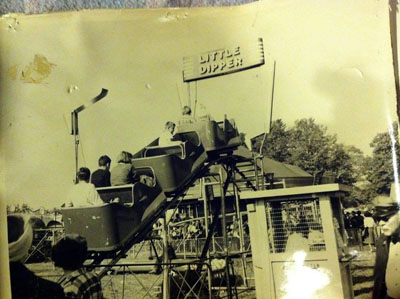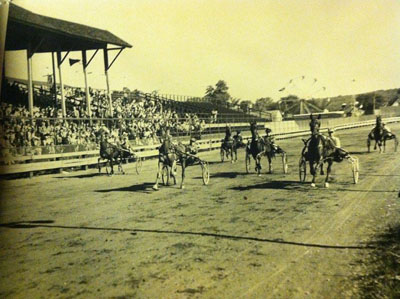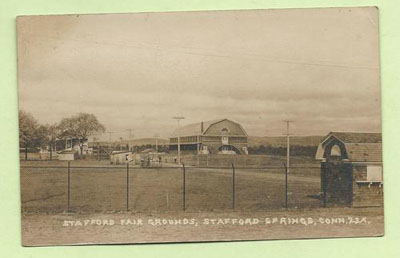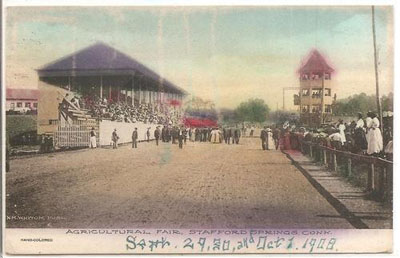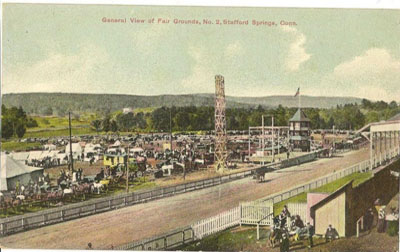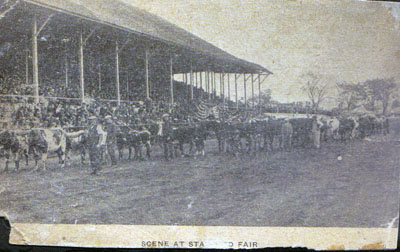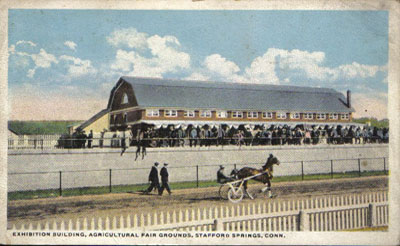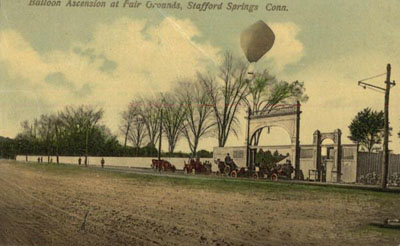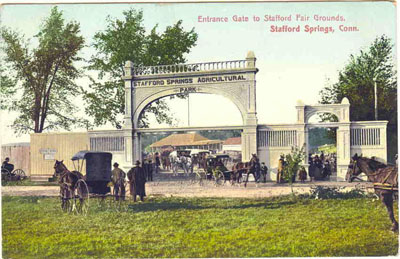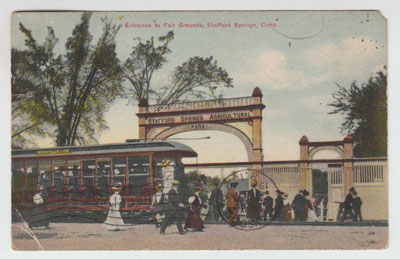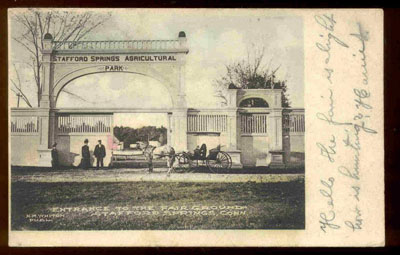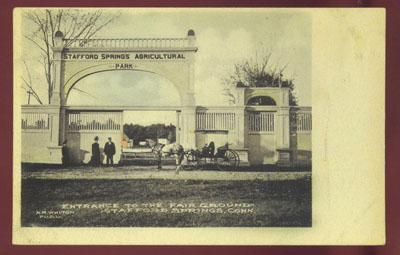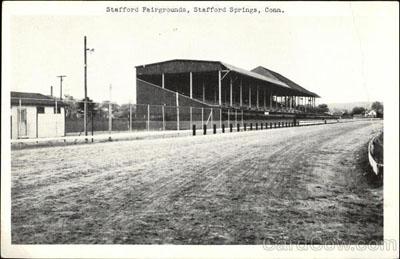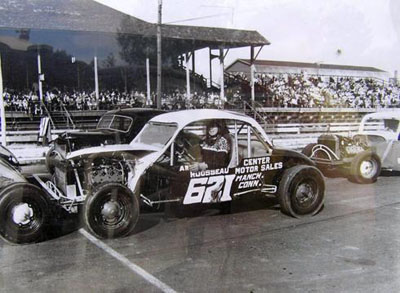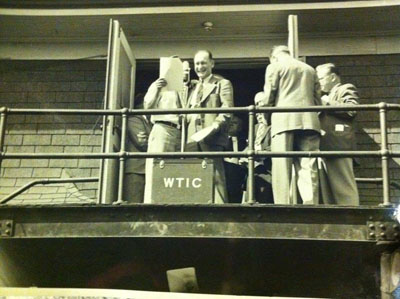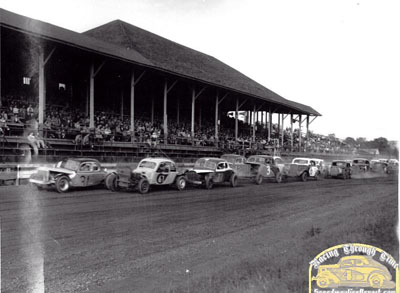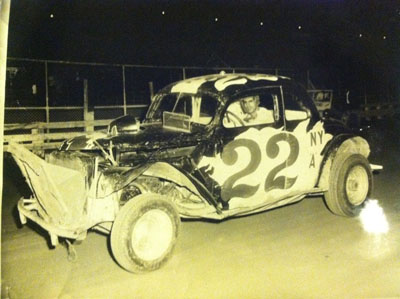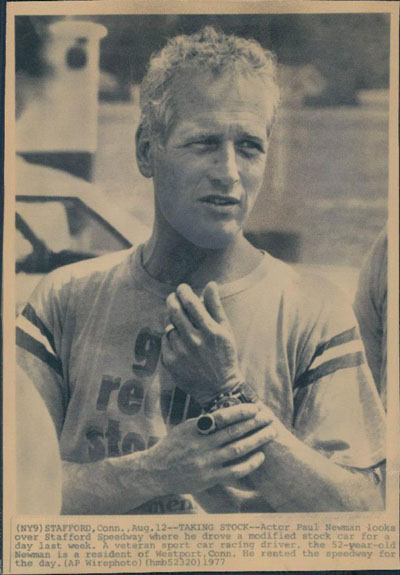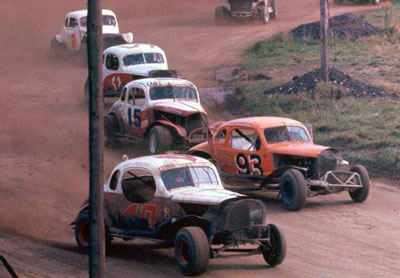Track History
History of stafford motor speedway
Throughout its history, the Stafford Motor Speedway has enjoyed a reputation for the innovative.
Known as the Stafford Springs Agricultural Park, this 100 acre facility
was developed to showcase the area’s Agricultural Heritage.

When the Park opened in 1870, patrons from the “big city”, nearby Hartford, would travel directly to the entrance gate aboard the newest form of mechanized transportation…a trolley!
Quickly Stafford’s reputation grew. The largest Agricultural events in New England called Stafford home and a half mile horse racing facility drew crowds interested in horsepower instead of fertilizer! Trotters and Pacers tested the Stafford track up to the end of World War II when the return to peace and prosperity brought a new type of racing to Stafford. Park officials reasoned that Americans were ready for faster action. They saw the popularity of Automobile racing in other regions of the country and the horse gave way to motor racing.
Midgets, Sprint Cars and an occasional new form of racing from the South called stock cars made Stafford a regular stop on a circuit that saw names like Bill Schindler, Johnny Kaye, George Flemke and Joe Ciski take checkered flags.
Bill France, Sr. unveiled his Daytona Speedway in 1959 and Stafford Speedway saw France’s vision. They entered into a long term agreement with France’s organization called NASCAR and hosted weekly NASCAR events through 2020.
Initially, Stafford remained a dirt track where Ernie Gahan captured one of his National titles. The track embraced stock car racing and a division known as modifieds (pre-war coupes souped up with post war engines). Midgets and sprints for the most part still garnered most of the racing enthusiasts attention, but the excitement of Modifieds attracted a new fan and the exploits of Lee Petty, Joe Weatherly and Curtis Turner in the South were rivaled by the exploits of their Northern counterparts; Pete Corey, Ernie Gahan, Bill Wimble, Frankie Schnider and a youngster named Eddie Flemke.

In 1967, Stafford’s dirt was replaced by asphalt.
With the new coat of pavement came a reputation that the track enjoys to this day.
Other area tracks were laid out for high speed and featured banking that would
imitate (on a smaller scale) the Southern Superspeedways.

Mal Barlow owned the Stafford track and had fielded cars in the South. He reasoned that banking made a track easy to drive. Barlow figured that once that type of track was conquered by a driver, he would move on and test his abilities elsewhere.
If Barlow was going to lose drivers to other tracks, he reasoned that they should take with them, a heritage.
So, when he paved over the horse track that was first built 97 years before, he opted for slight banks and a track that would put a premium upon handling rather than horsepower.
Modifieds remained the featured attraction and names like Sonny Hutchins, Ray Hendrick, Donnie and Bobby Allison knew that if they hoped to take the national title they had to run Stafford. Many did run Stafford, but the weekly regulars were often too tough for the outsiders. National Championships came to drivers at Stafford with as much frequency as the Boston Celtics won NBA titles. Bugs Stevens, Fred Desarro, Jerry Cook, and Richie Evans all won at Stafford and all took National Modified Championships.

Some drivers never won a National title but also earned recognition for Stafford and it’s demanding brand of competition.
Pete Hamilton left the Connecticut half-miler and one year later put a Petty Enterprises Plymouth into Daytona 500 Victory Lane. Denny Zimmerman answered the call of the Indianapolis Motor Speedway and captured the Indy 500 “Rookie of the Year” honors.
Stafford’s on-track reputation as a proving ground for stars was well established.
Mal Barlow could no longer justify the costs associated with the track’s operation and in June of 1969 announced to his employees that on July 11th he would shutter the track forever. Were it not for a former driver at the track and an owner that was at the time competing at Stafford, the track’s story would have ended.

Bill Slater, a retired modified driver whose reputation was
established when he bested a stellar field at the one-mile
Langhorne Speedway was Barlow’s racing director.
Despite being one-year short of a pensioned retirement at his primary employment,
Slater approached Jack Arute with an offer. If Arute would purchase the track, Slater
would leave his regular job and work full time at the track.
Jack Arute, Sr. was a Lifetime member of USAC and enjoyed Modified racing as a hobby and a welcome respite from the demands associated with running his family’s road construction business. Arute took Slater up on his offer and took title to Stafford .
On that same July 11th that was to mark the end of Stafford Motor Speedway, another era began. In what is to this day considered a true racing “moment”, Arute’s car co-owned by Ray and Rich Garuti took the first checkered flag under his track ownership with Eddie Flemke aboard.

Above is an ad that appeared in the July 19, 1949 issue of
Illustrated Speedway News for Stock Car Races at
Stafford Motor Speedway.

Thanks to Adam Higgins of Tolland for sending these
images to the Speedway.
Arute saw very quickly the problems that
had forced Barlow to sell.
Just as quickly, he reacted and set the course for Stafford, ordering new grandstands,
putting 12 foot paved safety aprons in the corners, paving the Paddock area,
increasing the purses and building new press facilities.
With the help of Slater and his son Jack, Jr., Arute pressured NASCAR for rules changes that would increase the sport’s popularity. He saw the need for Modifieds to enter the 70’s. Fans no longer could identify with the pre-war coupes and lobbied to approve more modern bodies like the Pintos, Vegas and Gremlins that fans drove on the highways.
Armed with NASCAR’s approval, Arute started what is now called the “Pinto Revolution” and moved onto his next project. Years of attending the Indianapolis 500 and the Daytona 500 convinced Arute that while Stafford could never duplicate the heritage of these two races, it could take the lure of these great events, mix it with the desire of drivers to someday compete on such a professional level and establish Stafford Motor Speedway as an entrance to the road to stardom.


Stafford drew upon the success of Pete Hamilton’s and Denny Zimmerman’s to enthuse their competitors.
The track introduced pre-race activities that duplicated some of the “big league” presentations by instituting formal Victory Lanes, hiring multiple announcers, pacing all events with a pace car , originating radio programs, etc.
On the track, modifieds were at their zenith. The open wheeled nature of the cars coupled with the newer bodies captured the fan’s imagination and the caliber of competition was unparalleled.

The message to competitors was simple. If you wanted to be the best, you raced against the best…at Stafford.
Regulars like Bugs Stevens, Fred DeSarro, Eddie Flemke, Richie Evans and Charlie Jarzombek held court at Stafford and fended off all outsiders. They were to be soon tested by two drivers who sought their turf; Maynard Troyer and Geoff Bodine.
Troyer found limited success by commuting from his upstate New York home weekly. Bodine on the other hand moved to New England, joined forces with jewelry manufacturer Dick Armstrong, and over the course of 5 years enjoyed many trips to Stafford’s Victory Lane.
By the early 80’s Stafford had a new aspirant to national stardom. Bodine left for the Southland and pursuit of his dream… a Winston Cup ride. Shortly thereafter, another Stafford regular followed the road South. Ron Bouchard joined forces with Connecticut businessman Jack BeeBee, and brought New England into the spotlight by winning the Talladega 500 in 1981. The accomplishments of Bouchard and Bodine attracted new aspirants to Stafford. Jimmy Spencer, Todd Bodine, Brett Bodine and Greg Sacks raced Stafford and read about their former teammates national accomplishments.

How strong was the lure of Stafford? When Wally Dallenbach, Jr. approached his father Wally Sr. (CART Chief Steward) about pursuing a professional career in motor racing, the elder Dallenbach told his son to build a modified and despite a 10-hour round trip tow from his home in New Jersey, join the Modified ranks at Stafford Motor Speedway!
Winston Cup drivers knew of Stafford’s reputation as well. Dale Earnhardt visited in 1985 and failed to win! The Late Tim Richmond and Cale Yarborough followed their friend Ron Bouchard back to Stafford one night. Richmond was so taken by the track’s modifieds that he asked for and got a ride in one. After starting near to last in the 30-lap feature that night, Richmond piloted the car under the checkered flag to score a win!

A link to NASCAR’s major leagues was now well established.
Mike Mclaughlin and Jeff Fuller used Stafford to jump their careers and so did young Steve Park, who secured a Busch Series and eventual Winston Cup ride with Dale Earnhardt Incorporated.

Stafford’s success was not without its share of controversial decisions.
When Arute first took title to the property, he outlawed an engine combination that only he and several other well healed owners possessed; the Aluminum 454 cubic inch Chevrolet engine. The decision caused the break up of his decades old partnership with the Garuti Brothers and sent a message that would become another cornerstone to Arute’s custodialship over Modified racing.
Jack Sr. believed that in order to ensure the prosperity of the division, he would sometimes have to leave conventional wisdom to others and strike out in directions that might cause short term hardship for some, yet deliver long term success to all.
Tires were his next target. Weekly competitors were often spending as much on tires as the available purse money. While the tire companies engaged in wars for brand supremacy, the individual competitors suffered. Arute’s first attempt at stemming the tire battle was to limit the tire’s size. In order to show his conviction, Arute gambled with his biggest annual event, the Spring Sizzler and declared that a tire size rule would go into effect. The Sizzler resulted in typical Stafford door-to-door competition, but a fan boycott left the attendance well below that of past “Sizzlers”. Reluctantly, Arute rescinded his tire rule later in the 1974 season after consulting with his competitors and all returned to normal.
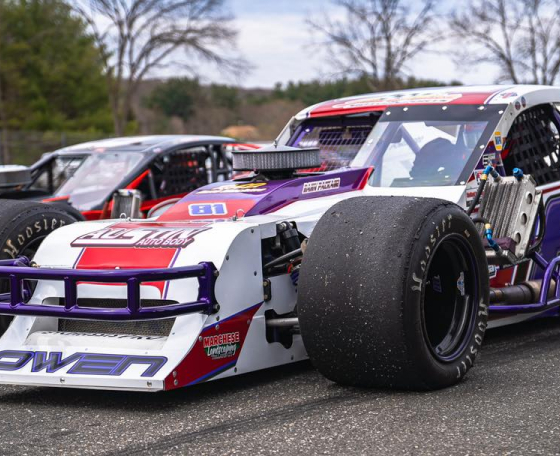
The die was cast though and by the late 70’s
Jack Arute, Sr. sensed a shift in opinion
regarding tires.
He boldly instituted a one-brand, one-compound tire rule at the track. The results validated Arute’s decision. Car counts increased and competition did likewise.
The tire companies fought back though and brought suit against Arute for alleged restraint of trade. In an effort to enhance their litigation, the tire giants named several other tracks that employed the one-brand, one-compound concept. The off track litigation sharply divided the racing community and left Stafford in the lead role of defending the position as well as putting the track heavily at risk for another fan boycott.
Crowd counts were down, but Arute stood firm. A trial and several appeals later the case was concluded. The one-brand, one-compound tire rule was upheld. Now, such a rule is accepted as a key element to successful short track operations. Critics say that Arute’s principles bordered on stubbornness. Others accused him of fantasy and folly. None, ever questioned his commitment.
When Stafford decided to change their modified rules to develop more affordable racing formula, critics and opponents alike saw the depth of Arute’s commitment.
Modifieds were losing entrants due to escalating costs. Though short in numbers, they still controlled the racing community in New England. Arute knew that other area tracks would be hard pressed to campaign for a more cost efficient set of rules. He used his own track to start a new modified series known as “SK’s” and pressured for a “Touring” concept utilizing costlier cars. The Whelen Modified Tour was endorsed by NASCAR and began operation. Despite increased purses for the Tour, part of the Tour community played upon fans and media to force Arute to reverse his decision.
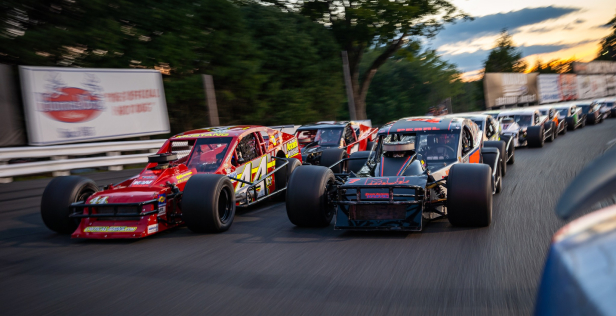
Fans displayed their dismay with Arute’s “SK” Modified® division and threw their early support to the Tour dissidents. Undaunted, Stafford set out on their new direction. The Tour remained part of Stafford’s annual schedule but faced repeated accusations that Arute “threw the modifieds out”.
